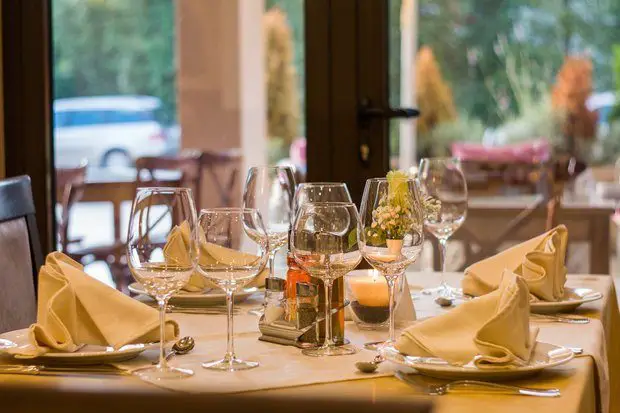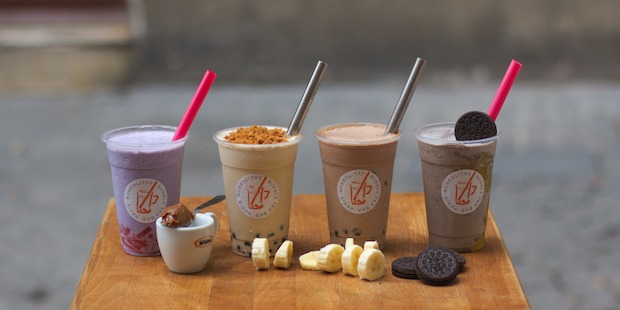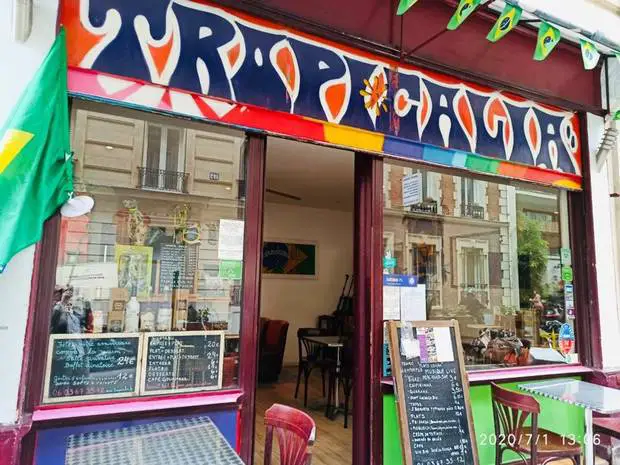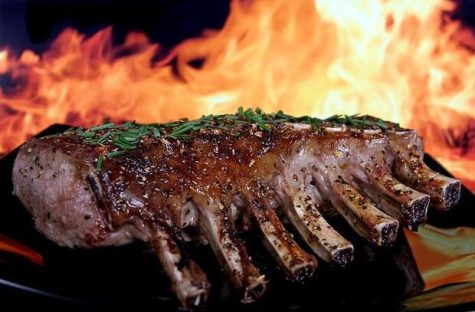France provides us with a thousand different cheese varieties, including soft cheeses (Camembert, Coulommiers, Munster), blue-veined cheeses (Roquefort, Bleu d’Auvergne), pressed cooked cheeses (Gruyere, Comté, Parmesan), 45 controlled designations of origin cheeses and 38 protected designations of origin cheeses. With more than 20 kg of consumed cheese per year and per capita, French people are the largest cheese consumers after Greeks. As our dear readers, you will find below a little historical note, a list by region of our favourite French cheeses, their history, a wine proposal on the side and recipe ideas.

Related topic : 9 Awesome Cheese Shops in Paris
History of cheese
According to legend, cheese production was discovered throughout the storage and the shipping of milk in ruminant’s stomach. Indeed, during the prehistory and, more precisely, during the Neolithic period (end of the Vth- beginning of the VIth millennium BC) that men expand the cheese manufacturing process. Thanks to the rennets which occur naturally in the animal stomach, used milk turns into curd then into whey. Once drained and dried, the whey becomes an easy food to transport and nourishing: cheese! Cheese would be one reason for the sheep, goat and, much later, cattle domestication. It is also acknowledged as a currency to pay tax or as an exchange value in different contracts.
21 famous French cheeses (sorted by regions)
Region Auvergne/Rhônes-Alpes
1) Bleu d’Auvergne (AOC 1975)
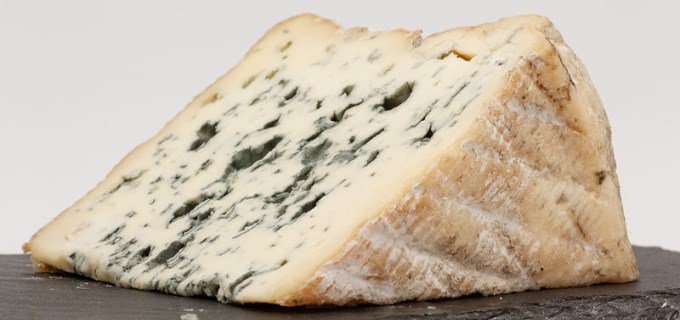
The Bleu d’Auvergne is a cow milk blue-veined cheese, unlike his cousin, the Roquefort which is made with ewe milk. The XIX century saw the Bleu d’Auvergne’s birth thanks to a farmer from the region, Antoine Roussel, wishing to develop the cheese “bluestain” which, according to him, brings a “special, pleasant and perfumed” taste. Several experiences later, based on rye bread, mold and artificial holes, the Bleu d’Auvergne is born! According to Georges Mathieu, the school director of Aurillac dairy industry, Antoine Roussel, “just achieved a microbial seeding and crop in an organic environment” (1854)
Go well with: Muscat-de-Rivesaltes or Banyuls
Recipe idea: Bleu d’Auvergne duck slivers
2) Cantal or “Fourme de Cantal” (AOC 1956)
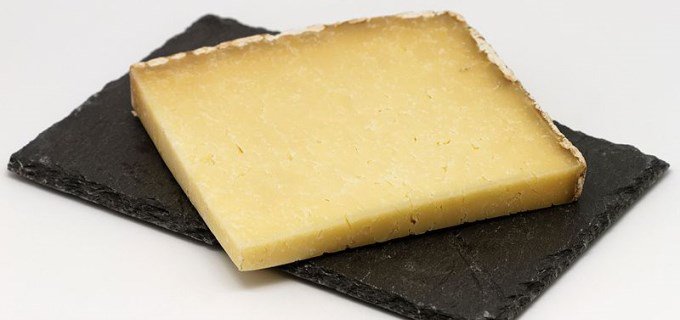
The Cantal is a pressed, uncooked cow’s milk cheese. Nicknamed “the cheese from Gabales and Gevaudan country” by Pliny the Elder, the Cantal is one of the oldest cheeses in history. 2000 years ago, the Cantal was already used as food storage by its impressive size (it can reach up to 45kg) and as a trade product. Like I said previously, the Cantal can weigh between 35 and 45 kg! The small Cantal weighs between 15 and 20 kg, about the Cantalet, which is between 8 and 10 kg. The minimum cheese-ageing is 30 days. For a young Cantal, it will take about 1 month of cheese-ageing, for a middle-aged Cantal, about 2 to 6 months, and for an old Cantal, more than 6 months.
Go well with: Beaujolais (red) or Cotes d’Auvergne (red)
Recipe idea: Olives and Cantal Cake
3) Reblochon (AOC 1958)
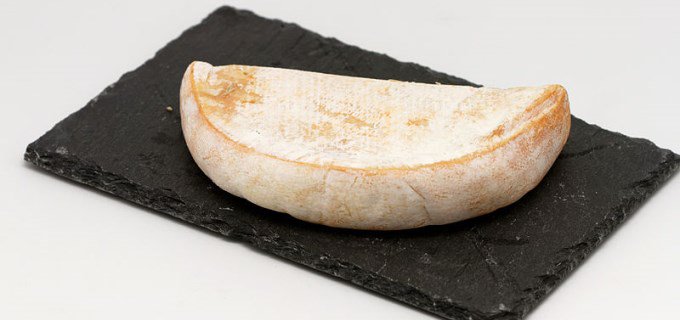
Reblochon’s birth occurs in the XIIIth century, in the Thones valley, Haute-Savoie. During the Middle Ages, farmers were not landowners and they had to pay a “right of use” on the quantity of milk produced and to make their animals graze, which made its production illegal. Indeed, after the controller’s visit, farmers start applying “the Rebloche” (in dialect), that means pinching the cow udders twice, thus, the milk acquired was very creamy. It was perfect for a cheese and especially free! In 1860, the Savoy was incorporated in the French Empire, which started the Reblochon’s trade, promoted by the railway in Annecy. The Reblochon cheese-ageing is 4 to 5 weeks on a thin, spruce slice.
Go well with: Roussette de Savoie
Recipe idea: the staple Tartiflette
Region Bourgogne – Franche-Comté
4) Epoisses (AOC 1991)
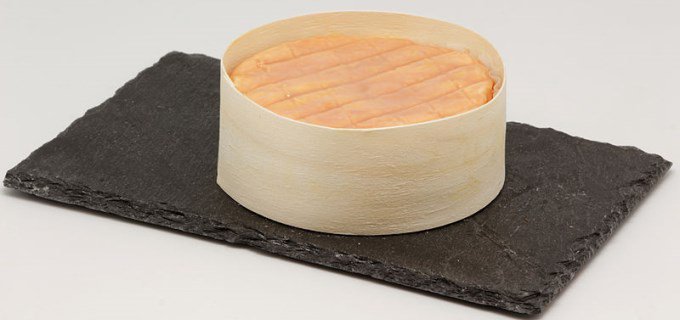
The most famous cheese of Burgundy was born in the XVIth century, from a Cistercian monk community, settled in Epoisses village. Before leaving the region, they bequeathed the famous cheese recipe to the peasants of the valley. The Epoisses gains popularity, it is eaten in the Louis XIV court, at Napoleon’s table and gets its famous reputation under the end of the Former Regime. The Epoisses is a soft, rind-washed cheese, partially washed with Marc de Bourgogne, the magistrate Brillat-Savarin consecrates it “king of cheeses” at the beginning of the XIXth century. After the First World War, its production is declining, it was only in the 1950s that it could get its popularity rating back, thanks to a farmer couple, Simone and Robert Berthaut. The cheese-ageing is a minimum of 4 weeks.
Go well with: soft Vouvray, vendange tardive Gewurztraminer or grey Pinot
Recipe idea: Epoisses quiche
5) Bouton de Culotte
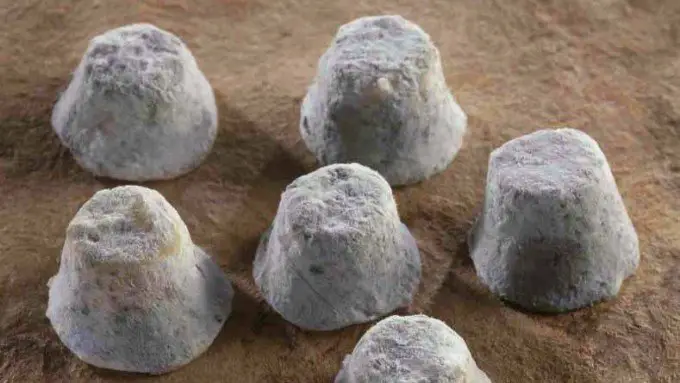
This soft, bloomy rind goat cheese comes from Maconnais and Haut-Beaujolais. History shows that Bouton de Culotte was born thanks to the herds of goat presence in the region. It is a smaller goat cheese and even the smallest cheese of all! Nicknamed “Chevreton of Maconnais or Cabrion”, the Bouton de Culotte owes its name to its little size, which, by the way, is able to drain off without being flipped and it has a shape that looks like a trouser button. The cheese-ageing is a minimum of 14 days, but to emphasize its typical pepper taste, you have to wait a bit longer… (about 2 months).
Go well with: Chablis (aperitif), Bourgogne aligoté or Champagne
Recipe idea: Beet crisps and Bouton de Culotte
6) Mont d’Or (AOC 1981)
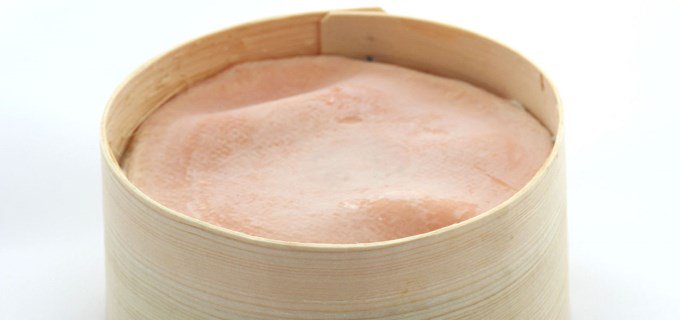
Soft rind-washed cheese, the Mont d’Or, also called “Vacherin du Haut-Doubs” or “Vacherin Mont d’Or” in Switzerland, is named after the highest point of its native relief. It was invented by the massif farmers to remedy the insufficient milk collecting to produce Comté. Unlike our Swiss friends who are using scalded milk, French Mont d’Or is exclusively composed of raw milk. It is also nicknamed “boëte cheese” or “strapped cheese” because of the spruce bark belt, which keeps “its shape” and gives it a woody perfume. It’s a rare product, which is tasted exclusively at some point in the year (September to May).
Go well with: Dry white wine of Jura, Bourgueil, Saint-Emilion or Graves
Recipe idea: Mont d’Or in the oven (one garlic clove and one tablespoon of white wine)
Region Bretagne
7) Cure Nantais
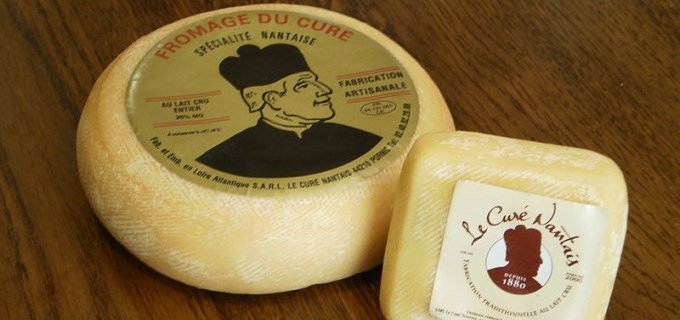
In 1880, in St Julien-de-Concelles, a small village near Nantes, a priest named Pierre Hivert creates a cheese, le “Regal des Gourmets”, which becomes a tribute to the holy man, “the Cure Nantais”. Nicknamed “priest cheese”, “cheese of the priest” or “Nantais cheese”, it’s a soft, rind-washed cow’s milk cheese which can be moulded under 3 shapes: a square model with rounded corners, its original shape, a big round model aimed at the cutting sale and a small model aged with Muscadet. The cheese-ageing is 4 weeks in a wet basement and on spruce boards.
Go well with: Muscadet or Gros-plant-du-pays-nantais
Recipe idea: Cure fashion mussel casserole
Region Centre-Val de Loire
8) Selles-sur-Cher (AOC 1975)
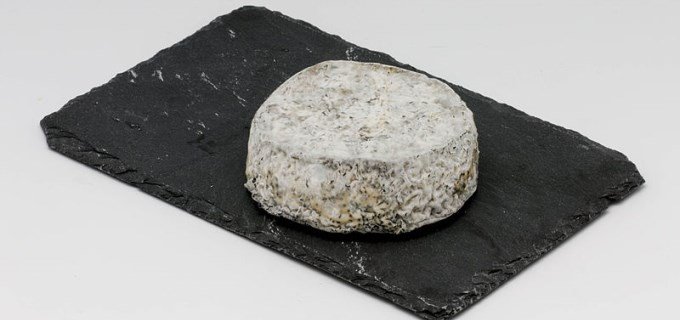
A little jewel from Loir-et-Cher, the Selles-sur-Cher is named after its native township, which is also the principal collecting and resale centre. The first written trace of this Berrichon cheese dates from the XIXth century, where a native farmer of the township explains that she always made Selles-sur-Cher, like her mother before her. The raising of goats was widespread in the region, the cheese is intended to be consumed by the family. The “egg cups”, refiner ancestors, regularly came to the farms to collect the foodstuffs including the goat cheeses, which were sold later. The Selles-sur-Cher is part of the soft with bloomy rind cheeses. The rind is salted and ashed with charcoal, which gives it a sweet taste. The cheese-ageing is between 10 days and 3 weeks.
Go well with: White Touraine
Recipe idea: Selloise salad
Region Corse
9) Brocciu (AOC 1983)
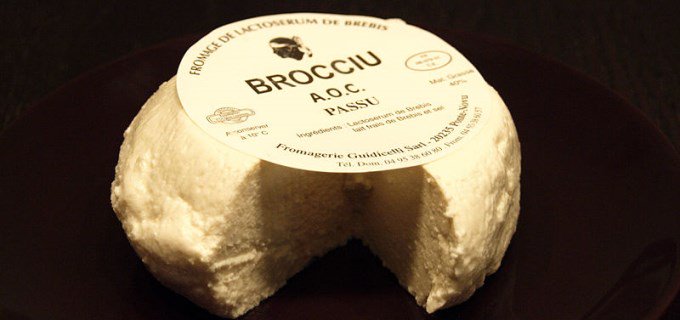
National pride of the Ile de Beaute, the Brocciu is the only cheese made with whey, which means the Corsican ewes and/or goats whey. According to legend, an ogre, animal stealer, who revealed the Brocciu production secret in exchange for his life, was threatened by the Corsican shepherds. The Brocciu name comes from the word “brousse” which is a reference to a Provencal fresh cheese. We can eat fresh Brocciu and passu Brocciu, and this includes 21 days of cheese-ageing. As the author, Emile Bergerat, said: “The one who never tasted, doesn’t know the island” (end of the XIXth century).
Go well with: Calvi Corsican wine (white), Pouilly-Fuissé, Bourgogne (white) or Crozes-Hermitage (white)
Recipe idea: Brocciu omelette
Region Grand Est
10) Munster (AOC 1969) or Munster Gerome
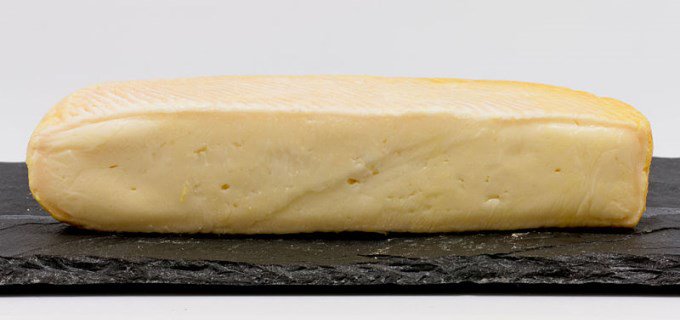
The Munster is a soft, rind-washed cheese, composed of raw cow’s milk. It was born in the VIIth century thanks to the “Monasterium Confluentes” monks who wished to keep the milk, and at the same time, to feed people. The first known mention about the cheese production is notified in the Marquard treaty (1339). The denomination of Munster cheese “Münsterkase” appears between 1573 and 1577. Cheese-ageing, according to specification, is 21 days minimum.
Go well with: grey Pinot, Chateauneuf-du-Pape or Gewurztraminer
Recipe idea: Alsatian burger
11) Langres (AOC 1991)
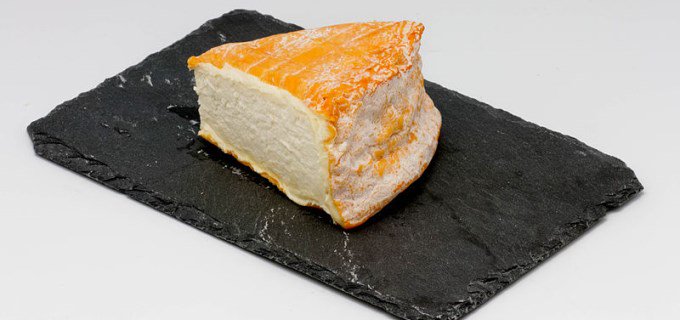
It’s in the middle of the XVIIIth century that we heard about the Langres cheese for the first time, in a composed sing by the city Dominican Prior. It is also quoted in the XIXth century, in a publication about cheese transformation beside its fellows, the Maroilles and the Livarot. The Langres distinguishes itself by the little “basin” at its top. The more the basin is dug, the more the Langres cheese is aged. But why is there a basin? Well, it’s simply because the Langres is never flipped, contrary to his number one competitor: the Epoisses. You have to wait about 15 days minimum of cheese-ageing for a small size, 18 days minimum for a middle size, and 21 days minimum for a big size.
Go well with: Chateauneuf-du-Pape, Lalande-de-Pomerol or Fronsac
Recipe idea: Salmon and Langres rillettes
Region Hauts-de-France
12) Maroilles (AOC 1976)
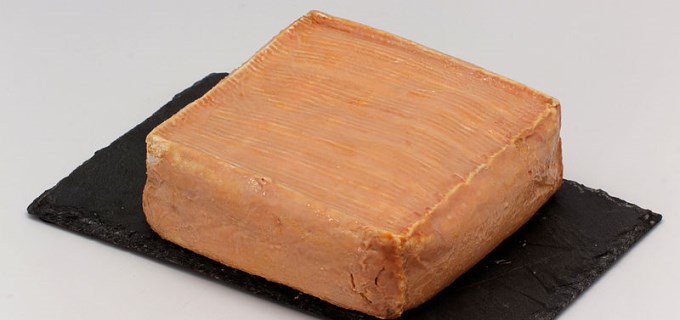
Soft rind-washed cheese, the Maroilles is one the oldest cheese of France. Its first recorded appearance was in the VIIth century throughout the ruling “l’Ecrit des paturages”. According to tradition, the Maroilles is invented by a monk of the Landrecies monastery around 960. It is known in the Middle Ages under the name “craquegnon” and helped to pay the tithe (1010 charter). Later, the Maroilles crosses the border and seduces Charles V, the Spain court intendant is charged with the shipping of the precious merchandise. All lovers of this cheese will agree with the Maroilles’ brotherhood device “Honni soit qui, without Maroilles, pretends holding loyal table”.
Go well with: Affligem beer
Recipe idea: Maroilles pie
Region Ile de France
13) Brie de Meaux and Brie de Melun (AOC 1980)
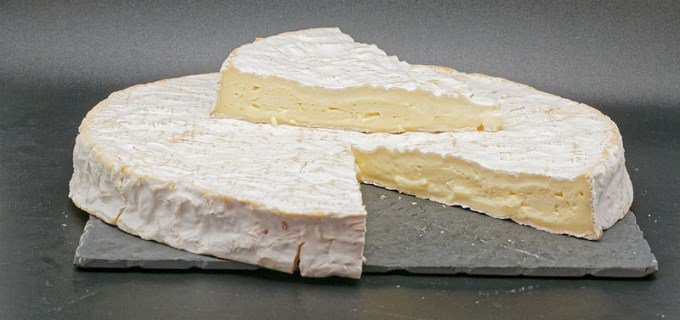
The Brie would be the ancestor of all soft cheeses, as the camembert. It’s King Charlemagne who talks about it first in 774, then it’s the turn of Robert II the Pious, who strongly cares about its trade in 999. Women will use it as a medium of exchange, like Blanche de Navarre and Queen Margot who respectively bribe Philippe Auguste and Henri IV with Brie toasts! Louis XIV loves and wants it every day for his meals. It is understood that the Brie is a royal cheese. But what’s the difference between the Brie de Meaux and the Brie de Melun, these two similar cousins? First of all, the cheese-ageing, the Brie de Meaux is refined for 4 to 8 weeks, whereas the Brie de Melun is refined for 4 to 12 weeks. Then, the draining, the Brie de Meaux has a spontaneous draining, whereas the Brie de Melun has a slow draining. The Brie de Meaux is moulded with a shovel and the Brie de Melun is moulded with a ladle. Moreover, the Brie de Melun is slightly smaller than the Brie de Meaux. In 1793, the Brie becomes important as the magistrate, François Joachim Esnue-Lavallee, references it, “the Brie, loved by rich and poor preached equality before we ever imagined it possible”.
Go well with: Champagne or Champagne method
Recipe idea: Vol-au-vent
Region Normandy
14) Camembert de Normandie (AOC 1983)
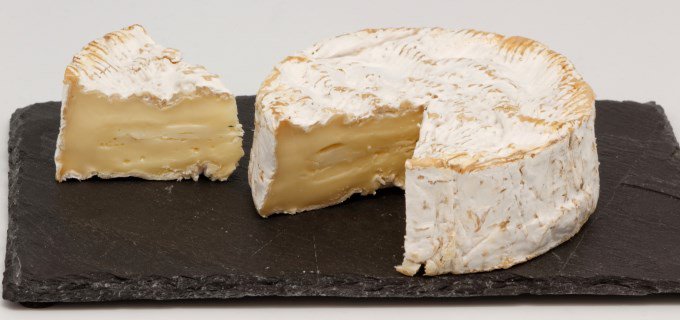
According to legend, this soft, bloomy rind cheese would be born in Camembert village (Orne), in the Jacques and Marie Harel’s property. The couple was hiding since October 1790, the abbot Charles-Jean, Benedictine and prior of Rouxville, in order to save him from the French revolution repression. One year later, the Camembert of Normandy was born for our great pleasure. The milk needed for its production comes from cows of Normandy, raised outdoors day and night.
Go well with: Champagne Blanc de Blancs, Anjou-Gamay or Touraine
Recipe idea: Camembert in the oven
15) Pont l’Eveque (AOC 1972)
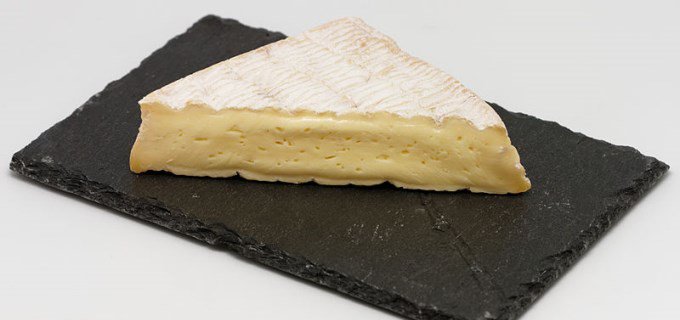
This little creamy square is one of the oldest cheeses of Normandy. In the soft, rind-washed cheese category, it makes its appearance in the XIIth century thanks to Cistercian monks. It is nicknamed, in 1230, the “Angelot” in reference to a coin. A little historical reminder: the cheese was used at that time as an exchange medium, remuneration or tax. Guillaume de Lorris even quotes him in his famous book, the Roman de la rose, “the good tables were always furnished at dessert of angelot cheeses”.
Go well with: Madiran, Pecharmant ou Fitou
Recipe idea: Pont l’Eveque roquet-monsieur
Region Nouvelle-Aquitaine
16) Ossau-Iraty (AOC 1980)
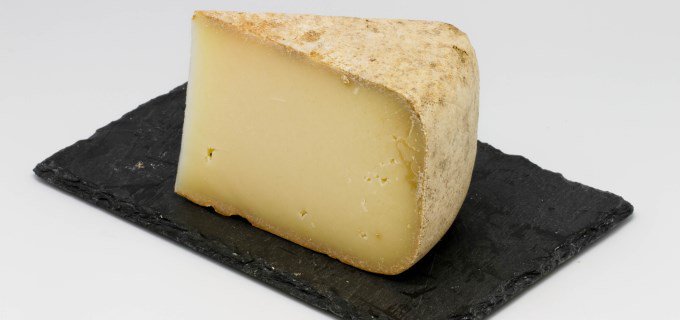
Pure product of Pays-Basque and Bearn regions, the Ossau-Iraty is a pressed, uncooked ewe cheese. The region weather conditions encouraged the dairy sheep farming and, therefore, the Ossau-Iraty production, that’s why the XIVth century sharecropping contracts made reference to ewe cheeses. Ewes have to be basco-bearnaise, Manech black head or Manech red head.
Go well with: Irouleguy or Jurançon
Recipe idea: Prawns and Ossau-Iraty, Espelette pepper risotto
17) French Edam
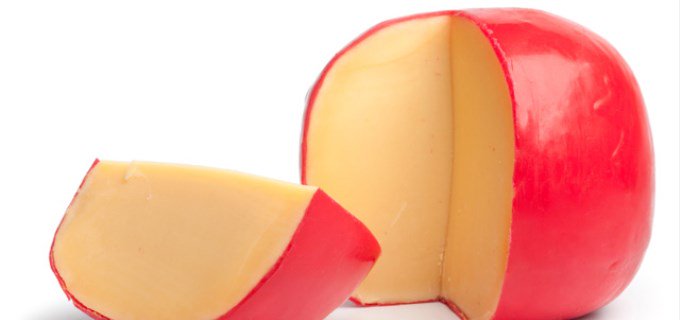
Yes, we French also make Edam like our Belgian friends! In the XVIIth century, the Edam was exported in Germany, France and Great Britain. The red colour of the rind would come from Bordeaux barrels, in which they were conveyed. The first French Edam was made in 1660 in Queyrac in the Medoc and would have inspired northern cheesemakers of France to make the first mimolettes. Nicknamed “Moorish head”, the fatty Holland, the red ball or the gold ball, the Edam gets different cheese-ageing: for a stew quarter edam, you have to count between 3 and 6 weeks, for a half stew edam, it is between 3 and 4 months, and for a stew edam, it is between 9 months and 1 year.
Go well with: Beaujolais (red), Anjou (red or white), Saumur or Medoc (red)
Recipe idea: Edam balls
Region Occitanie
18) Pelardon des Cevennes (AOC 2000)
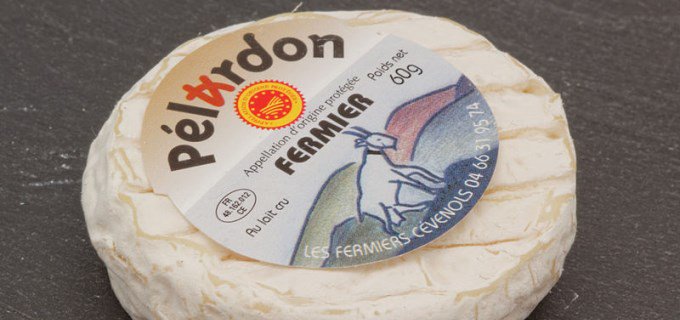
The Pelardon from Languedoc is a soft, bloomy rind goat cheese, and its name originated from the cevenol language (“pebre” which means pepper). The goat and sheep raising is pervading in the region in order to ensure the following foodstuffs: milk, meat, and cheese. In 1756, the abbot, Boissier de Sauvage, told us about the cheese called Peraldou “little rounded and flat cheese we make in the Cevennes…” Frederic Mistral, the Occitan writer, describes it as a “little rounded cheese, goat’s milk, spicy and dry taste, and proper to Cevennes”. Paraldon, Pelardou, Peraudou, the final Pelardon name is established in the XIXth century and its consumption only goes out of the family circle in the 1960s, thanks to the goat raising renewal in the region.
Go well with: Ventoux (white), Cotes du Rhones Villages blanc, white Pays d’Oc, white Sancerre
Recipe idea: Pelardon Languedoc eggplants
19) Cabecou d’Autan
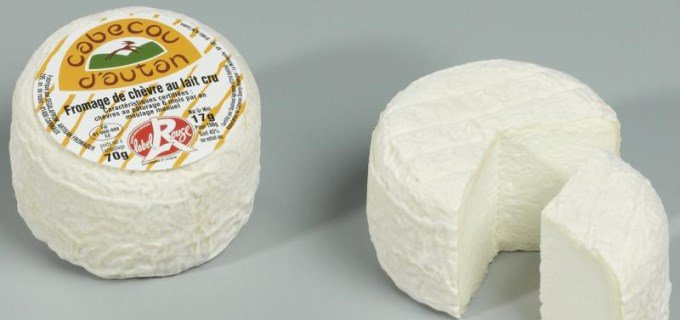
This little goat cheese is a soft, bloomy rind cheese from Poitevine, Saanen or Alpine goats, raised in the Quercy and Rouergue regions. A south-west product, its name comes from the occitane language “cabra” (goat) and “fromatjon” (little cheese) that we adjusted for our current language in Cabecou. Moulded exclusively with ladle, this little cheese gets the Red Label since 2006. Cheese-ageing is about 10 days.
Go well with: Bourgogne (white), Tavel rosé or Marcillac (red)
Recipe idea: Cabecou d’autan madeleines
20) Roquefort (AOC 1925)
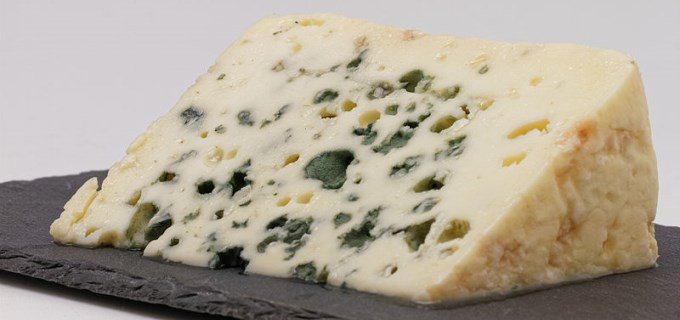
According to legend, a shepherd in love who wanted to seduce his lady left his sandwich composed of rye bread and ewe cheese in a cave where he was resting. When he came back, sometime later, to enjoy his meal, he discovered mold on it and the Roquefort was born! The first written mention dates of the XIth century and represents a historical symbol for the region of Causses and Aveyron valleys. In the XVth century, Charles VI then, Charles VII grant to Roquefort habitants, several privileges. In the Age of Enlightenment, it’s Diderot who declares the Roquefort “king of cheese”. The Roquefort basements are located in the heart of the Combalou plateau, the “fleurines” bring the airflow needed to the cheese’s development. The Papillon Roquefort basements offer you a free guided visit and a tasting. For more information, click here (french link). Cheese-ageing is 3 months minimum.
Go well with: Sauternes, Banyuls or Gewurztraminer
Recipe idea: Roquefort sauce
Region Provence Alpes Cote d’Azur
21) Banon (AOC 2003)
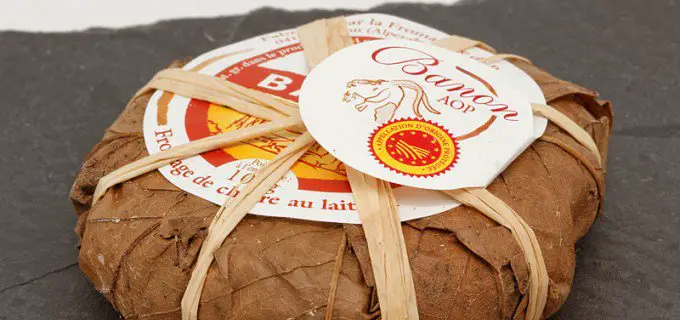
The Banon cheese is named after a small village located a few kilometres from the Albion Plateau. According to legend, the Roman emperor, Antoine the Pious, died of gluttony, which proves its seniority. To keep the cheese, the shepherds decided to wrap it in chestnut leaves, held with a blade of raffia. In 1849, the abbot Feraud talks about it: “we run in Banon several attended fairs. The cheese sold there is very valued”. To obtain a mild and rounded batter and because of the weather imposed by the region, we use the soft curd technique (little or no whey added).
Go well with: Cotes-de-provence (white and red) or Coteaux-Varois-en-Provence
Recipe idea: Rosemary and Banon fougasse
I aim to share my tips and recommendations for the beautiful country of France. My goal is to help you plan your next adventure, whether it’s a weekend getaway or a once-in-a-lifetime trip. From finding the best hotels and restaurants, to discovering unique activities and sights, I’ve got you covered!

